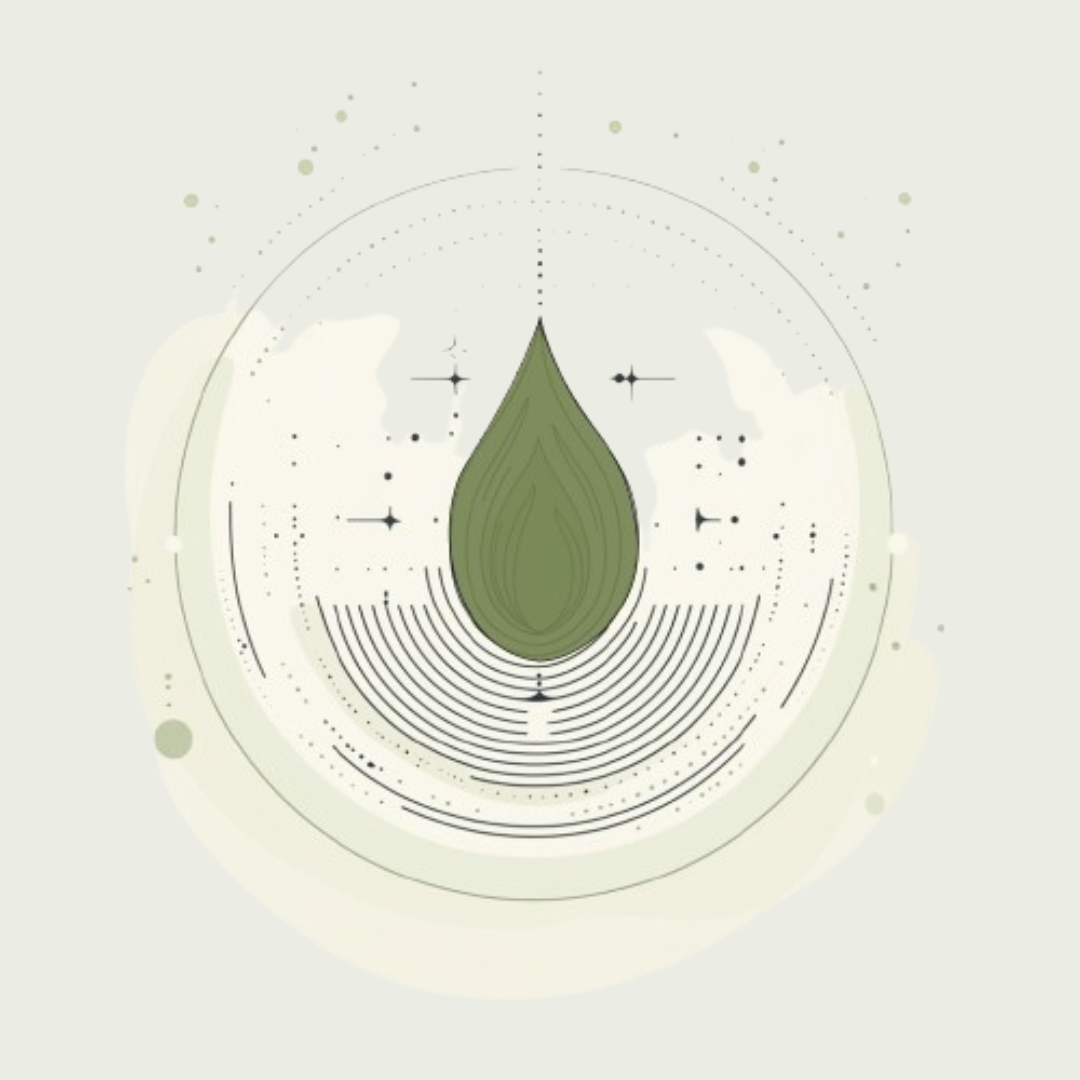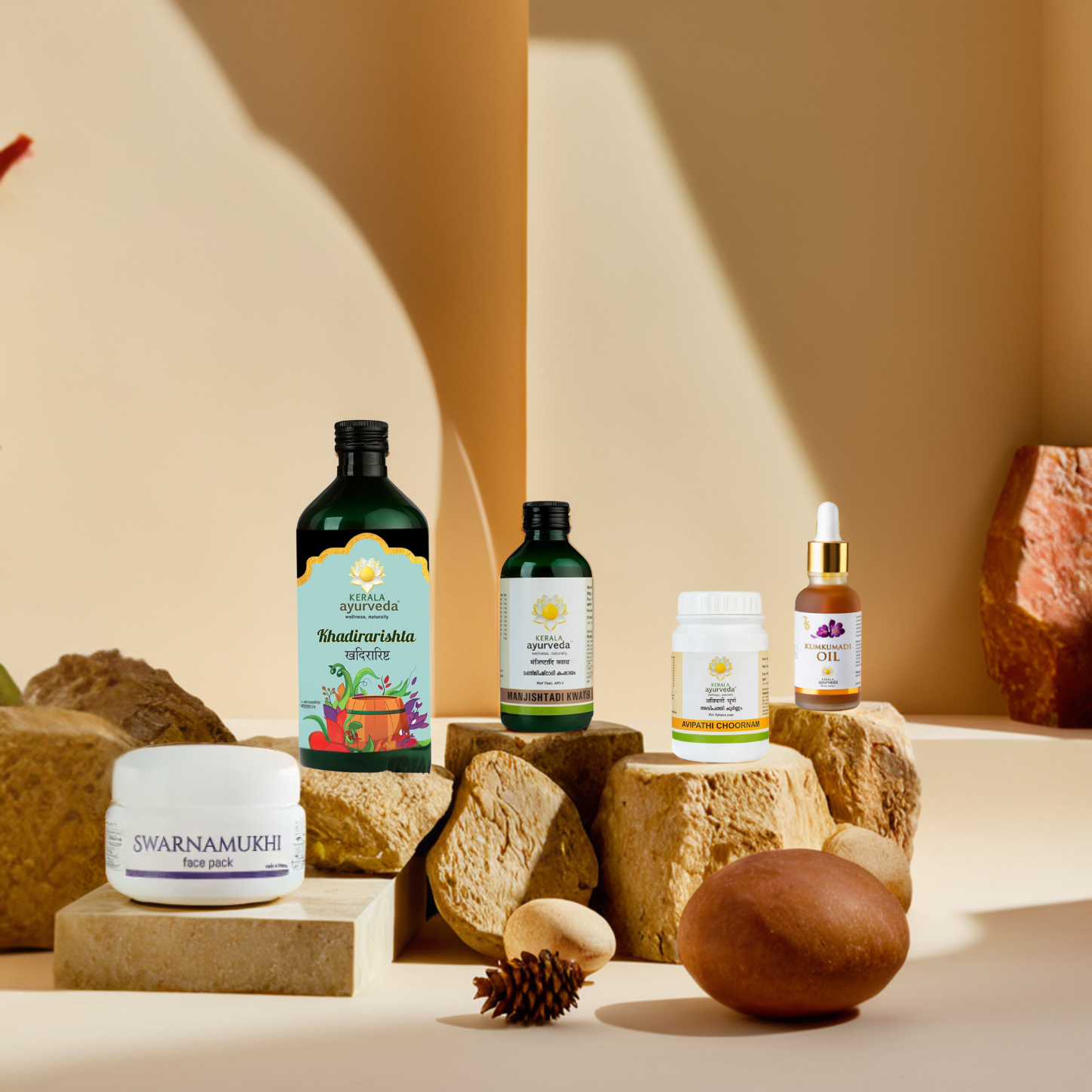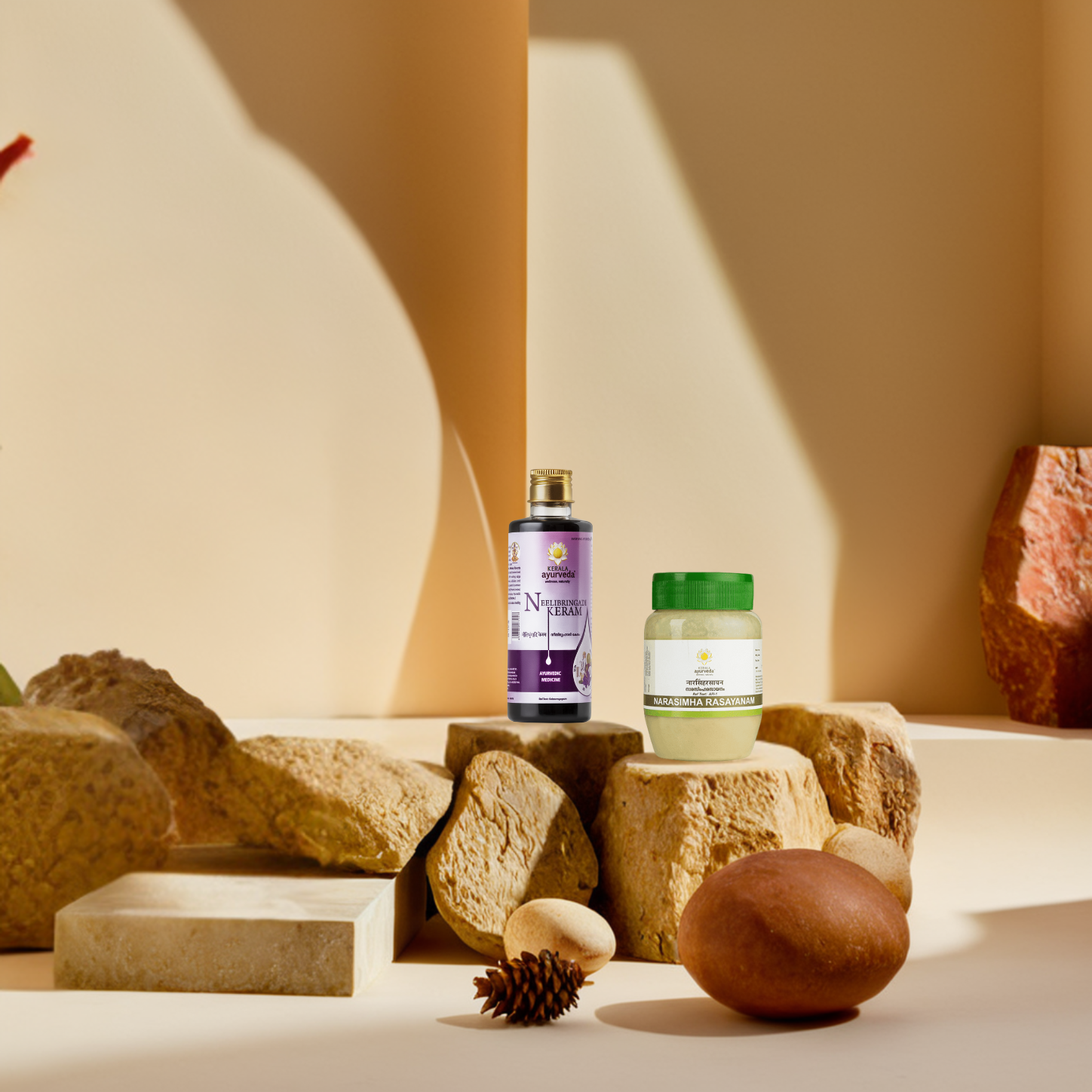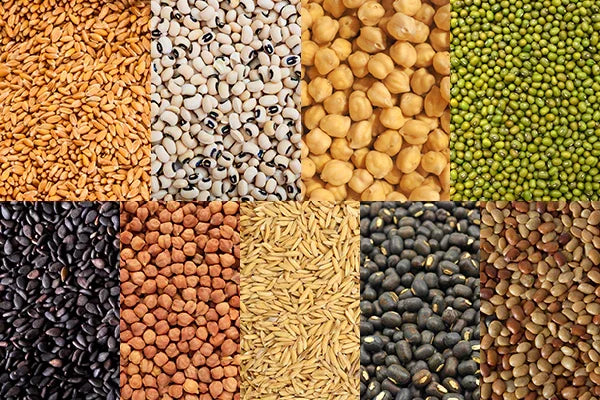Highlights
Ayurveda is an intricate science that is used for the general well-being of individuals. The ancient practice is built on the foundation that ailments and deficiencies can be managed using natural techniques. Ayurvedic techniques such as Navadhanya use ingredients like herbs, spices, and medicinal plants to come up with concoctions that are useful in treatments. But what is Navadhanyam? Let’s find out in the sections below.
Ayurveda has its foundations laid by the ancient Hindu philosophical teachings, the Vaisheshika school of thought and the Nyaya school of logic. Thus, Ayurveda, deriving from the ancient Hindu culture, combines science and spirituality, holding food and lifestyle as healing factors along with medicines.
Worshipping Gods and Goddesses with offerings is a common ritual in Hinduism, as food is considered as Bramham, or supreme. One such inevitable part of Hindu pujas and rituals, Navadhanyam (nine sacred grains) is offered to the nine grahas or planets on auspicious occasions like Navarathri and griha pravesham (house warming), is also important in Ayurveda as a potent health mix.
Significance of Navadhanyam
The basis of Navadhanya is from the ancient scriptures -- the Vedas. It is said that the configuration of the nine planets or nava grahas in our solar system affects the world and every individual residing in it. There is a belief that worshipping these planets can ward off misfortune from past karmas. Moving to the physical health benefits of Navadhanya, the nine pulses used in practice (offered to the nine planets) have varied health benefits and can be used to bring balance to the Doshas.
Constituents of Navadhanyam
Here’s the Navadhanya list of cosmic influences:
- Wheat: Offered to Sun
- Rice: Offered to Moon
- Toor dal: Offered to Mars
- Chickpeas: Offered to Jupiter
- Moong beans: Offered to Mercury
- White beans: Offered to Venus
- Black sesame: Offered to Saturn
Two satellite planets (Upagrahas)
- Indian black lentil: Offered to Rahu
- Horse gram: Offered to Kethu
Navadhanya Benefits - Health Benefits of the 9 Grains
Apart from Navadhanya cultural, religious and spiritual significance, the grains also have several health benefits. In this section, let’s examine some key Navadhanya benefits.
Wheat:
Known as Godhuma, it is an alleviator of vitiated Vata dosha, is sweet, cold in potency, invigorating, aphrodisiac, unctuous, bestows strength and stability, laxative, unites fractures and heavy. (Ch. Su. 27/21)
Whole wheat grain has complex carbohydrates that keep one full longer and thus aid in weight loss. Rich in magnesium and insoluble fibre, it improves metabolism and helps in reducing the risk of type 2 diabetes and gallstones.
Rice:
Rice is mentioned in Ayurveda literature as sweet with astringent after taste, unctuous and aphrodisiac, nourishing, light, and diuretic. (As. hri. 6/1)
Rice is a good source of Vitamin B, fiber and iron. Rice has antioxidant activity and controls blood pressure as it is low in sodium.
Toor dal:
Pigeon pea or Toor dal is dry, light to digest, improves complexion and increases Vata dosha.
Toor dal is an excellent source of protein and fiber while being low in calories. Regular intake of it reduces the risk of developing type2 diabetes and helps manage weight.
Chickpeas:
Described as chanaka, chickpeas are light, sweet with astringent after taste, cold in potency and unctuous.
Chickpeas are low in fat, a good source of antioxidants, and proteins.
Moong beans:
Moong bean is described as mudga in Ayurveda and is light, cold, and potent, as well as an alleviator of Kapha and Pitta dosha. It bestows a clear vision and provides nourishment to tissues. (As.hri 6/17)
Moong bean is one of the best plant-based proteins and essential amino acid sources. It is high in fiber content and low in glycaemic index. The carbohydrates in moong beans are easily digestible, which causes less flatulence than other legumes.
White beans:
White beans increase Vata dosha, breastmilk and are heavy, laxative and destroys toxins.
White beans are rich in folates, iron, magnesium, potassium and vitamin B.
Black sesame:
Black sesame, mentioned as Til and is hot, good for skin, is a hair tonic, and strength promoting. It improves memory retention, increases digestive power, Kapha and Pitta dosha.
Black sesame is a good source of energy and healthy polyunsaturated fatty acids. It is rich in fiber, iron, calcium, magnesium, and phosphorus.
Indian black lentil:
Black lentil, known as masha in Ayurveda, is an aphrodisiac that alleviates vitiated Vata dosha, is hot in potency, is sweet, heavy, and promotes strength. (Ch. Su.27/25)
Black lentils are rich in protein, fat and Vitamin B and aid in digestion because of their high fibre content. It improves skin health and improves circulation due to its high potassium levels.
Horse gram:
Horse gram or Kulattha is hot in potency, astringent in taste, and alleviates vitiated Kapha and Vata dosha. It is beneficial in cough, hiccups, dyspnoea, piles, calculi, and rhinitis. (As. Hri. 6/18)
Horse gram is a known diuretic and antioxidant-rich legume, which is also rich in proteins and Vitamins. It is low in calories, and high in fibre and thus aids in weight loss and better digestion.
How to Use Navadhanyam?
Here’s a step-by-step procedure on how you can use Navadhanyam through a protein-rich recipe:
Ingredients:
- 1 cup uncooked Navadhanyam Mix
- ½ cup of chopped beans
- 2 cups of water
- 2-3 cups of chopped Italian flat-leaf parsley
- ½ cup of chopped mint
- 1 tablespoon of chopped rosemary
- ¼ cup of chopped scallions
- 2-3 tomatoes, cored and chopped
- 2 Persian cucumbers, diced
- 1 avocado, diced
- 2 tbsp. olive oil
- 2 tbsp. lemon juice
- ½ tsp salt
Procedure:
- Soak the lentils and beans together and cover them well in water overnight.
- Drain and rinse well.
- Place it in a pressure cooker along with salt and adequate water.
- Cook for 15 minutes in the pressure cooker. The lentils should be soft but not mushy. Set aside.
- While cooking lentils, chop parsley, mint, rosemary, scallions, tomatoes, cucumbers, and avocado. Place into a bowl and add in the cooked and strained lentils.
- Squeeze fresh lemon juice to taste, share, and enjoy.
Conclusion
Navadhanyam holds a religious, cultural, and spiritual significance for Hindu families residing across the globe. Whether it’s a Griha Pravesh pooja (housewarming prayer) or a Navagraha pooja for other occasions, Navadhanyam grains are used and offered to the deity. And that is not it. Apart from the worship rituals, the Navadhanyam grains have numerous health benefits, as discussed in the blog above.
Hopefully, this blog was helpful.





